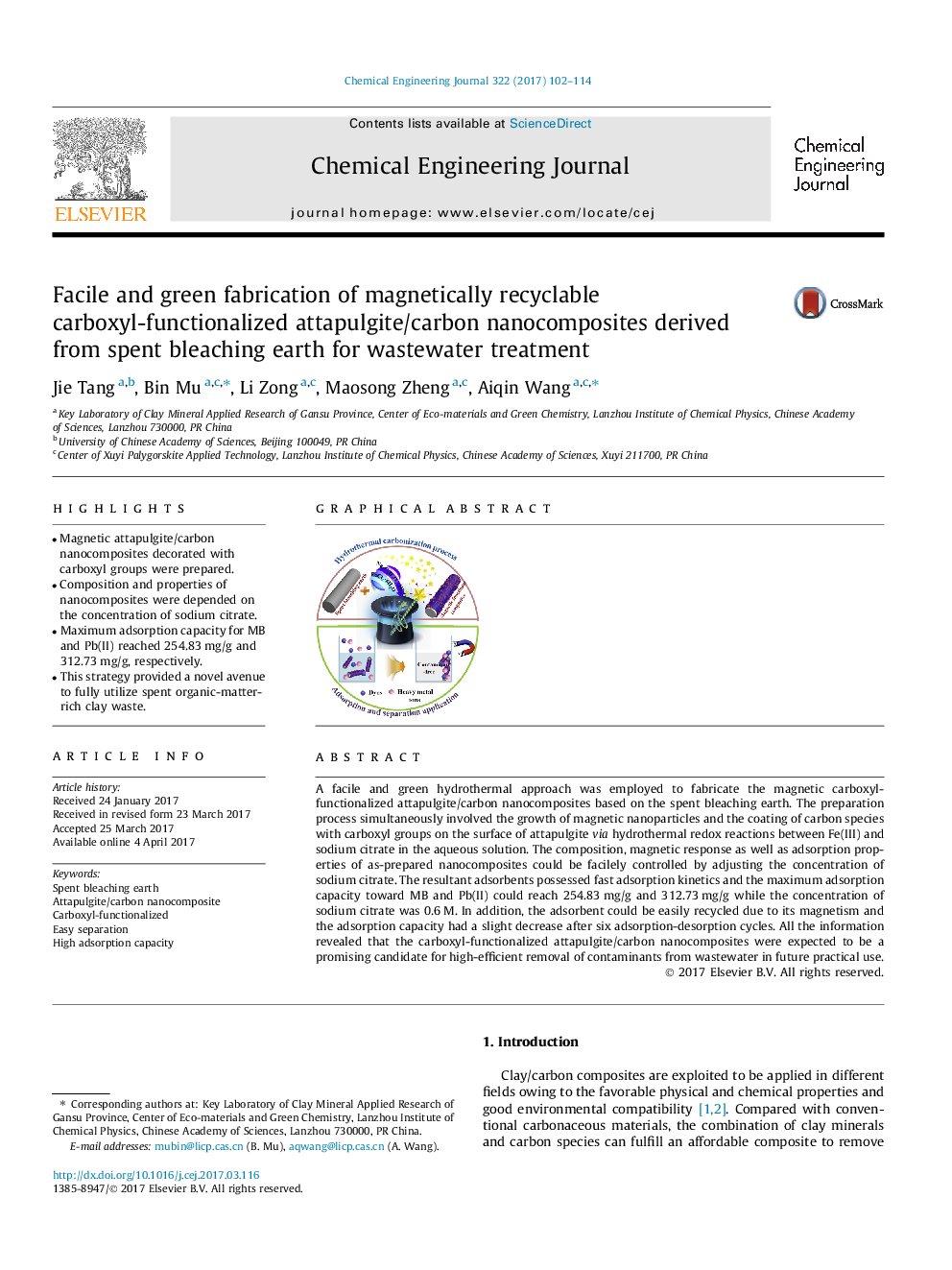| Article ID | Journal | Published Year | Pages | File Type |
|---|---|---|---|---|
| 6465626 | Chemical Engineering Journal | 2017 | 13 Pages |
â¢Magnetic attapulgite/carbon nanocomposites decorated with carboxyl groups were prepared.â¢Composition and properties of nanocomposites were depended on the concentration of sodium citrate.â¢Maximum adsorption capacity for MB and Pb(II) reached 254.83 mg/g and 312.73 mg/g, respectively.â¢This strategy provided a novel avenue to fully utilize spent organic-matter-rich clay waste.
A facile and green hydrothermal approach was employed to fabricate the magnetic carboxyl-functionalized attapulgite/carbon nanocomposites based on the spent bleaching earth. The preparation process simultaneously involved the growth of magnetic nanoparticles and the coating of carbon species with carboxyl groups on the surface of attapulgite via hydrothermal redox reactions between Fe(III) and sodium citrate in the aqueous solution. The composition, magnetic response as well as adsorption properties of as-prepared nanocomposites could be facilely controlled by adjusting the concentration of sodium citrate. The resultant adsorbents possessed fast adsorption kinetics and the maximum adsorption capacity toward MB and Pb(II) could reach 254.83Â mg/g and 312.73Â mg/g while the concentration of sodium citrate was 0.6Â M. In addition, the adsorbent could be easily recycled due to its magnetism and the adsorption capacity had a slight decrease after six adsorption-desorption cycles. All the information revealed that the carboxyl-functionalized attapulgite/carbon nanocomposites were expected to be a promising candidate for high-efficient removal of contaminants from wastewater in future practical use.
Graphical abstractDownload high-res image (101KB)Download full-size image
